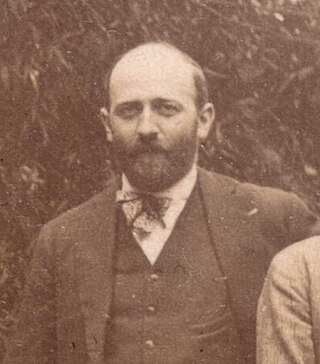Related Research Articles

Walter Hamor Piston, Jr., was an American composer of classical music, music theorist, and professor of music at Harvard University.

Robert Fuchs was an Austrian composer and music teacher. As Professor of music theory at the Vienna Conservatory, Fuchs taught many notable composers, while he was himself a highly regarded composer in his lifetime.
Nicolas Oreste Flagello was an American composer and conductor of classical music. He was one of the last American composers to develop a distinctive mode of expression based wholly on the principles and techniques of late romanticism.
A capriccio or caprice, is a piece of music, usually fairly free in form and of a lively character. The typical capriccio is one that is fast, intense, and often virtuosic in nature.
Concertino is the diminutive of concerto, thus literally a small or short concerto.
Osvaldas Jonas Balakauskas is a Lithuanian composer of classical music and diplomat.
Hans Graf is an Austrian conductor.

Alexis Fernand Félix Jean Rivier was a French composer of classical music in the neoclassical style.
Capricorn Concerto, Op. 21, is a composition for flute, oboe, trumpet, and strings by Samuel Barber, completed on September 8, 1944. A typical performance lasts approximately 14 minutes.
Michail Vladimirovich Jurowski was a Russian conductor who worked internationally, based in Germany for most of his career. He was particularly interested in the works of Dmitri Shostakovich, in concerts and recordings.

Lucijan Marija Škerjanc was a Slovene composer, music pedagogue, conductor, musician, and writer who was accomplished on and wrote for a number of musical instruments such as the piano, violin and clarinet. His style reflected late romanticism with qualities of expressionism and impressionism in his pieces, often with a hyperbolic artistic temperament, juxtaposing the dark against melodic phrases in his music.
Leonard Hokanson was an American pianist who achieved prominence in Europe as a soloist and chamber musician.
Symphony No. 2 by Walter Piston is a symphony composed in 1943.
The Symphony No. 4 by Walter Piston is a symphony dating from 1950.
Walter Piston's Concerto No. 1 for Violin and Orchestra was written in 1939 and dedicated to violinist Ruth Posselt. Posselt, backed by the National Orchestral Association under Léon Barzin, gave the first performance at Carnegie Hall on 18 March 1940.
Three New England Sketches by Walter Piston is a symphonic suite dating from 1959.
Walter Piston's Serenata for Orchestra is an orchestral suite or miniature symphony written in 1956.
A harp concerto is a type of musical composition composed for a solo harp player accompanied by a large ensemble, such as a concert band or orchestra.
References
- ↑ Steven Lowe Liner notes Archived 2019-02-23 at the Wayback Machine to Walter Piston: Symphony No. 4, Capriccio for Harp and String Orchestra, Three New England Sketches. Seattle Symphony Orchestra; Gerard Schwarz, conductor. Naxos CD 8.559162. [Hong Kong]: Naxos, 2002.